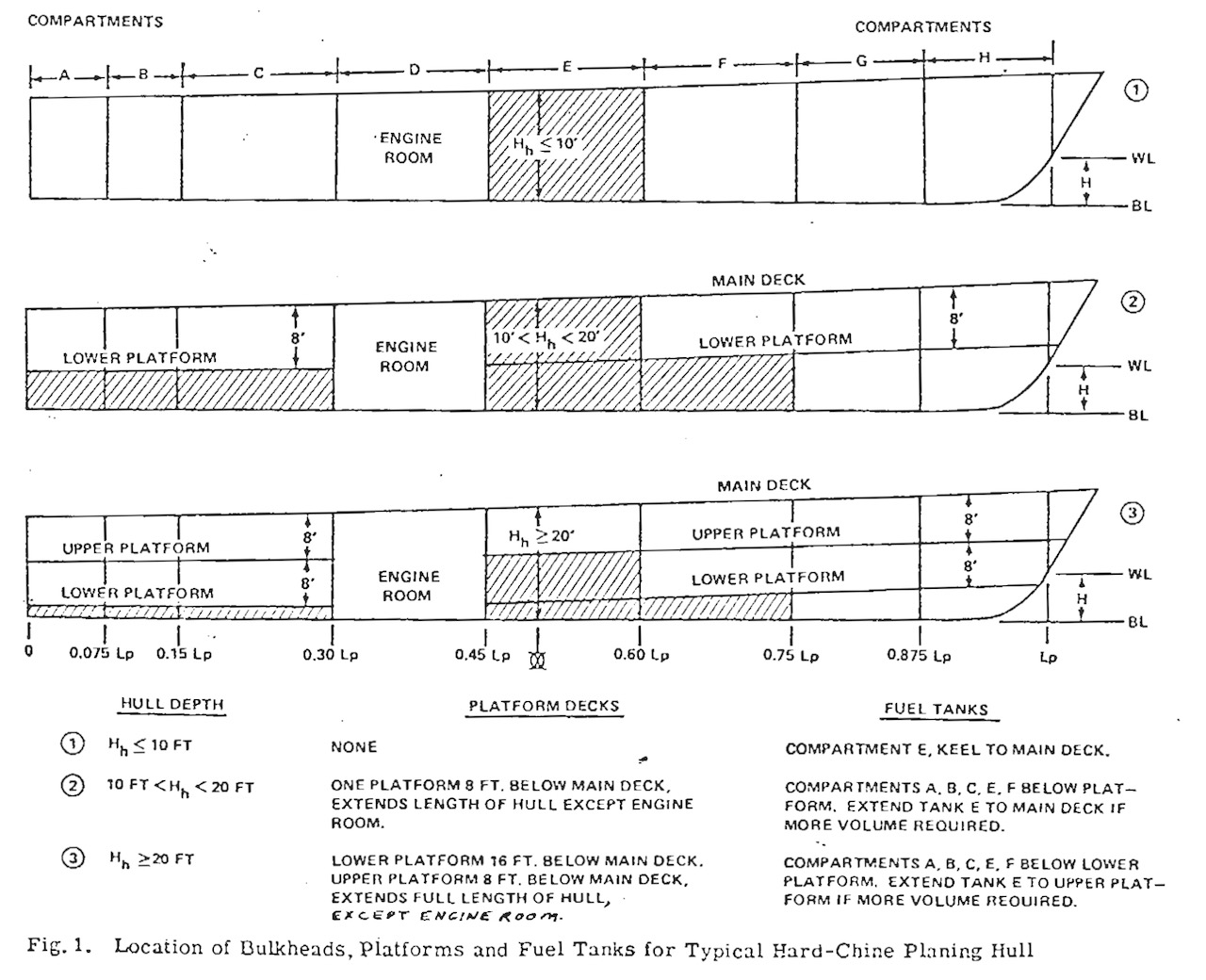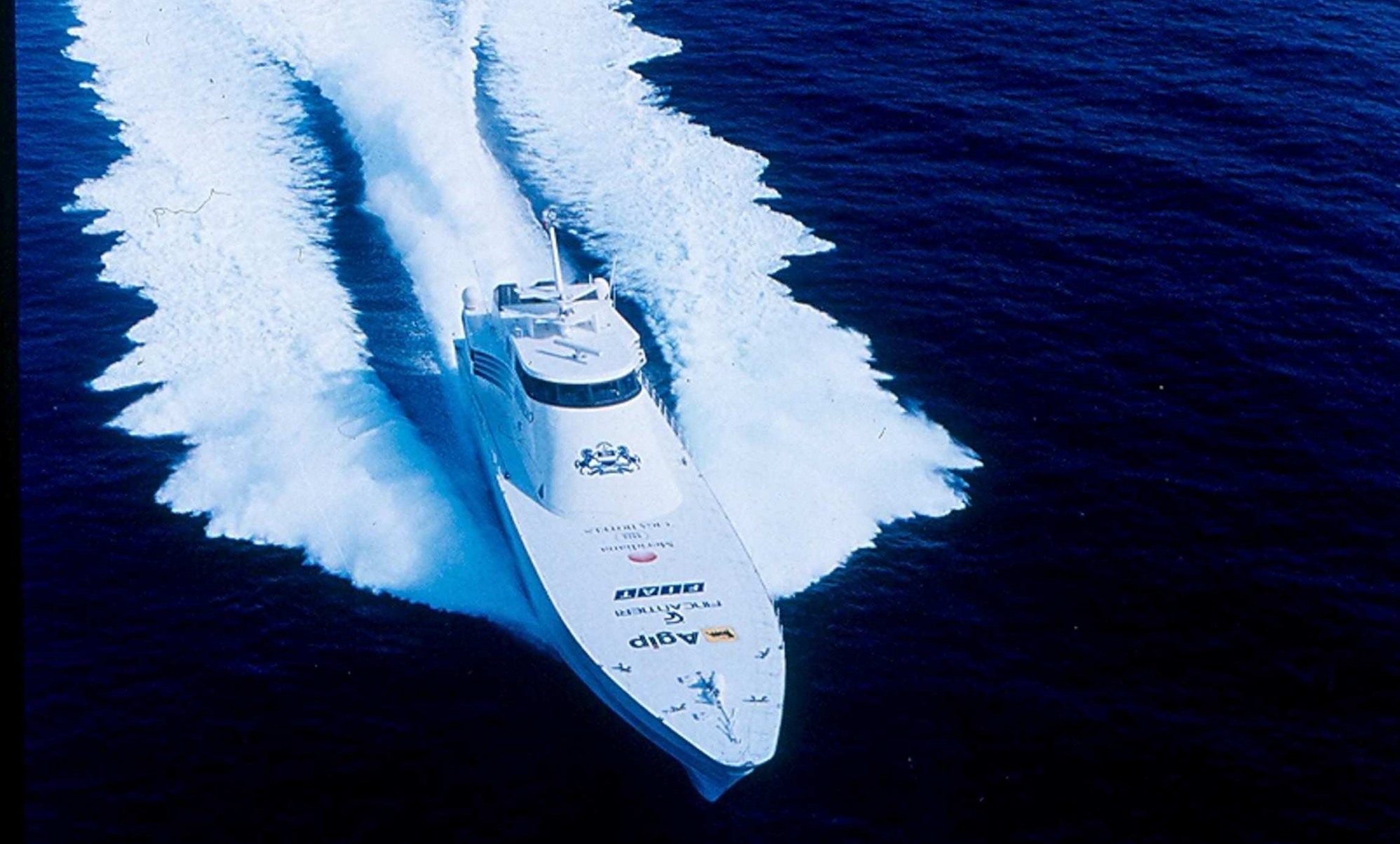DLBA UNIVERSITY
Planing Hull Feasibility Model – It’s Role in Improving Planing Craft Design
JANUARY 27, 2021
By J.B. Hadler (Fellow), E.N. Hubble, R.G. Allen and D.L. Blount
Our team has the pleasure of supporting many clients in the definition phase of their projects. In these early on, low maturity efforts, we have discovered the need to be able to produce relatively accurate design/product information in a short amount of time with little known information. This necessity leads us to follow the Pareto Principle in early stage design, where 20% of the work will lead the team to 80% of the results. One paper we have found extremely helpful in these efforts is the Planing Hull Feasibility Model, which we fondly refer to as PHFM. PHFM was an effort by the U.S. Navy to develop regression equations based on existing US Navy planing craft to aid designers in there feasibility studies. Over the years we have used the techniques and equations extensively and updated them as necessary to reflect modern technology. It’s a great tool in our toolkit!

Summary
This paper outlines the development of a feasibility model which can be used to assist in the design of planing hulls. The concept of the model is to calculate the weight, volume and vertical centre of gravity of the major ship components, including the variable loads, for a planing ship or fixed displacement and enclosed volume, with the remainder of the weight and volume available for the payload.
The data base for the model includes small patrol craft, hydrofoils, destroyers DD, and destroyer escorts DE, so that wide range of planing ship sizes can be considered. The hull structural design concept is based upon a rational design procedure which takes into account sea loads as well as the effect of changing hull proportions, i.e., length, beam, and depth.
Results of studies done on a typical hard-chine planing ship with mission and basic characteristics Similar to the US Navy’s PG89 Class show the value of the feasibility model in improving the payload carrying ability by optimizing the ship proportions. The effect of different types of hull material and construction upon the overall ship size, as well as the effect of reducing the weights of the reduction gears, are shown from feasibility model studies.
In case you would like to receive the full paper, or discuss about this subject, please contact Jeffrey Bowles.

References
Heller, S. R. and Jasper, M. H.: “On the Structural Design of Planing Craft”. Trans. RINA, Vol. 102, 1961.
Allen, R. G. and Jones, R. R.: “Consideration of the Structural Design of High Performance Marine Vehicles”. Paper presented to New York Metropolitan Section, SNAME, Jan. 1977.
Heller, S. R. and Clark, D. J.: “The Outlook for Lighter Structures in High Performance Marine Vehicles”. Marine Technology, Vol. 11, No. 4, Oct. 1974.
Blount, D. L. and Fox. D. L.: “Small Craft Power Predictions”. Paper presented to Western Gulf Section, SNAME, Feb. 1975.
Blount, D. L. and Fox, D. L.: “Design Considerations for Propellers in a Cavitating Environment.” Paper presented to Hampton Roads Section, SNAME, Sept. 1976.
Gawn, R. W. L. and Burrill, L. C.: “Effect of Cavitation on the Performance of a Series of 16 Inch Model Propellers”. Trans. INA, Vol. 99, 1957.
Newton, R. N. and Rader, H. P.: “Performance Data of Propellers for High-Speed Craft.” Trans. RINA, Vol. 103, 1961.
Savitsky, D. and Brown, P. W.: “Procedures for Hydrodynamic Evaluation of Planing Hulls in Smooth and Rough Water.” Marine Technology, Vol. 13, No. 4, Oct. 1976.
Eames, M. C. and Drummond, T. G.: “Concept Exploration – An Approach to Small Warship Design”. Trans. RINA, Vol. 119, 1977 (see also The Naval Architect, March 1977).
Bailey, D.: “The NPL High Speed Round Bilge Displacement Hull Series”. RINA Maritime Technology Monograph No. 4, 1976.
Martin, M: “Theoretical Prediction of Motion of High Speed Planing Boats in Waves”. DTNSRDC Report 76-0069, April, 1976.
Zarwick, E. E.: “A Non-Linear Mathematical Model of Motions of a Planing Boat in Regular Waves”. DTNSRDC Report 78/032, March, 1978.
Share this article online:
HOW CAN WE HELP YOU?
FEEL FREE TO CONTACT US

DLBA Naval Architects
860 Greenbrier Circle, Suite 201 Chesapeake, Virginia 23320 USA
Phone: 757-545-3700 | Fax: 757-545-8227 | dlba@gibbscox.com
STAY UPDATED
SIGN UP FOR OUR NEWSLETTER
Keep your finger on the pulse of the latest points of focus in naval architecture and engineering: subscribe to DLBA’s concise monthly newsletter. Within it, we briefly describe and picture our latest projects and concepts. We encourage feedback and seek to have our newsletter spark conversation regarding potential collaborations and further advancements as we share our passion for the industry.
